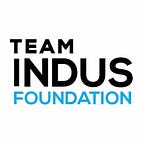To the moon and back. In a soda can.
The winners of the Lab2Moon contest may have been announced in March, but the work of getting the experiments ready for the journey from Earth to Moon has just begun.
The competition called on students under age 25 from across the world to design an experiment, small enough to fit into a soda can, to help sustain life on the moon. Over 3,000 entries were received from 15 countries and in the semi-finals in March, 15 teams defended their proposals.
The panel of Dr K. Kasturirangan, former Chairman, ISRO; Dr Alain Bensoussan, former head, CNES; and Dr Priyamvada Natarajan, department of astronomy and physics, Yale, suggested that the data from these experiments was potentially of such great value that the TeamIndus Foundation decided to take not one, but eight canister experiments aboard its spacecraft as payload to the moon.
Italian team Space4Life was declared the winner with its experiment to use cyanobacteria as a radiation shield, and Team ZΩI came a close second with its plan to study photosynthesis in space. While a flight ticket is Space4Life’s prize, biopharmaceutical company Biocon has come on board to ensure Team ZΩI makes the trip. The other six teams are still working to raise funds to book their spot on the lunar lander.
Members of two shortlisted teams — EARS and Callisto — are currently stationed at the TeamIndus headquarters in Jakkur, Bangalore, working out how to make the chosen student experiments viable in the most challenging lab they have ever encountered — the frigid, airless surface of the moon. They are not only deconstructing their own experiments, but those of their competitors as well.
‘Our aim was not to win — it was to find ways to colonize the moon. Our interest is in the science itself,’ says Saumil Vaidya, 24, from Team EARS.
He, his colleague Aniket Kamat, 20, and member of Callisto Vishal Singh, 21, are TeamIndus Foundation interns now, working together to integrate all the experiments with the lander.
Integration is a tricky business, with risks ranging from experiment failure to damage to the spacecraft. So this technical vetting and testing process is being done in close collaboration with TeamIndus engineers from various fields. It has been broken down into stages — objectives, requirements, design, analysis, development and testing. Currently Saumil, Aniket and Vishal are working on electronics, a critical component of all the experiments. Without electronics, several experiments will not be functional and none of them will be able to communicate with the spacecraft’s on-board computer to send their data back to earth.
There is much to be done still.
‘In an actual scientific scenario, you’d need one year to do the work we are doing here in three weeks,’ explains TeamIndus Jedi Trooper and systems engineer for payloads, Nirmal Suraj Gadde.
‘We are short-wiring the analysis by using the experience of in-house experts,’ he says.
By cutting out the process of trial-and-error to arrive at the selection of parts, the experiments will be made flight-ready in a fraction of the time possible otherwise. After the experiments are engineered from the ground up, they will have to undergo qualification testing, a mechanical process during which they will experience the same stress of launch on the Polar Satellite Launch Vehicle (PSLV). Some of the canisters will be completely sealed; others will have components that will be exposed to the moon’s conditions. Each presents a unique challenge, and a unique opportunity for learning.
Originally published at medium.com on June 15, 2017.
